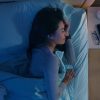Even before her diagnosis, she knew something was wrong. Her symptoms made it nearly impossible to function from day-to-day.
Looking at a computer or tablet screen was enough to create debilitating dizziness and nausea. Even setting foot in an artificially-lit store like Target would trigger a migraine attack so severe that they knocked Kayla off her feet.
But fast forward to today and Kayla McCain has learned how to live with her diagnosis, something known as a vestibular disorder i.e. vestibular migraine. Through plenty of trial and error, Kayla has learned what works and what doesn’t. She now hopes her story and personal experiences can help others living with vestibular migraine regain some comfort in their own lives.
What is Vestibular Disorder?
The vestibular system is a part of human anatomy that includes the parts of the inner ear and brain that process sensory information involved with controlling balance and eye movements. And when the system is damaged, people can suffer from a range of symptoms including vertigo, vision disturbances, hearing imbalances, migraines and more.
In Kayla’s case, she experiences constant dizziness, blurry vision, auras, and what she calls “dirty vision” (which is actually referred to as floaters). The worst part about her vestibular migraine, though, is that it is a type of migraine that can attack without a precursor headache. So instead of being “tipped off” by pain, she experiences the aforementioned symptoms without warning.
Treating Vestibular Migraine
How do you treat a “migraine” that’s not an actual headache? The usual suspects—Advil, Excedrin, etc.—don’t work. Instead, many doctors prescribe a cocktail of pills intended to help rewire your brain chemistry and potentially stop the migraine attacks from occurring. For Kayla, this prescription was a nightmare. The pills caused extreme anxiety and she began losing clumps of hair at a time.
Next, doctors tried a popular Beta Blocker called Atenolol. This drug is intended to treat people who experience all types of migraine, but because Kayla has asthma she suffered a severe adverse reaction to it.
Out of medicinal options, and at her wit’s end, Kayla decided to take matters into her own hands. It was time to treat the cause rather than the symptoms.
Discovering BluTech
If Kayla’s symptoms weren’t bad enough, she is a full-time marketer by trade, meaning she spends all day in front of her computer. Being diagnosed with a disorder that is onset by artificial lighting such as the blue light from electronic screens meant Kayla couldn’t simply cut out the devices in her life.
That’s when she turned to our blue light filtering glasses.
“I spend 8+ hours on my computer, and BluTech Lenses make that doable for me. They’re also more fashionable than your typical migraine glasses.”
Kayla is now functioning at full speed once again. Her vestibular disorder is something she will live with the rest of her life, but she feels adequately prepared to face them thanks to her two pairs of BluTech lenses.
“I need glasses that can block both fluorescent lights and blue light, and these glasses provide more than a tint because of their patented pigment technology. The ULTRA lens is my everyday go-to pair and I’ve been leaning on the MAX lens on my bad migraine days because it feels like the light is less apparent.”
To learn more about vestibular migraine and read Kayla’s story on her blog, click here.
To learn more about BluTech’s patented lens technology, visit our migraine web page.
Find BluTech Near You




